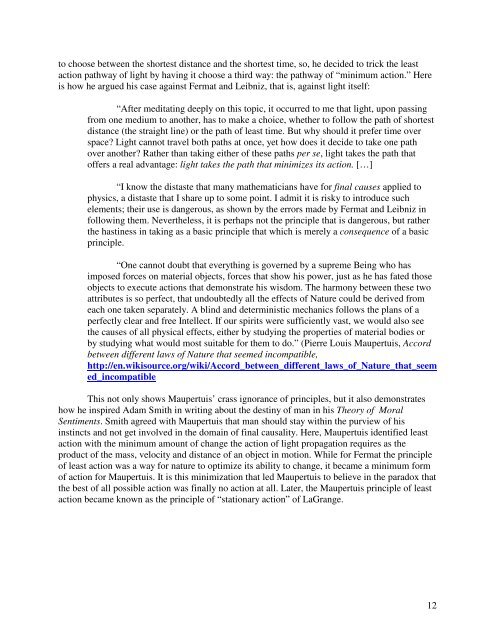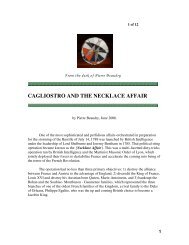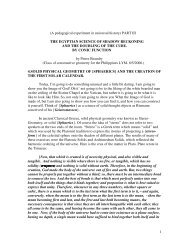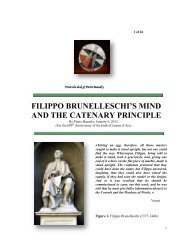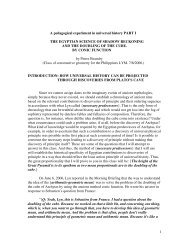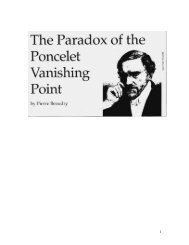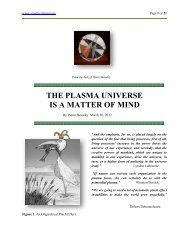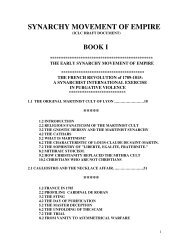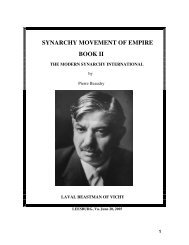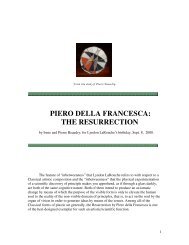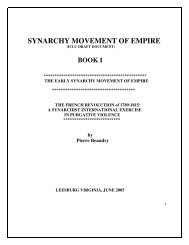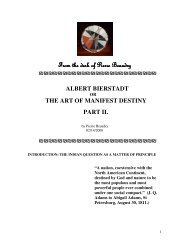LOUIS DE BROGLIE : THE WAVE AND PARTICLE PARADOX
LOUIS DE BROGLIE : THE WAVE AND PARTICLE PARADOX
LOUIS DE BROGLIE : THE WAVE AND PARTICLE PARADOX
Create successful ePaper yourself
Turn your PDF publications into a flip-book with our unique Google optimized e-Paper software.
to choose between the shortest distance and the shortest time, so, he decided to trick the leastaction pathway of light by having it choose a third way: the pathway of “minimum action.” Hereis how he argued his case against Fermat and Leibniz, that is, against light itself:“After meditating deeply on this topic, it occurred to me that light, upon passingfrom one medium to another, has to make a choice, whether to follow the path of shortestdistance (the straight line) or the path of least time. But why should it prefer time overspace? Light cannot travel both paths at once, yet how does it decide to take one pathover another? Rather than taking either of these paths per se, light takes the path thatoffers a real advantage: light takes the path that minimizes its action. […]“I know the distaste that many mathematicians have for final causes applied tophysics, a distaste that I share up to some point. I admit it is risky to introduce suchelements; their use is dangerous, as shown by the errors made by Fermat and Leibniz infollowing them. Nevertheless, it is perhaps not the principle that is dangerous, but ratherthe hastiness in taking as a basic principle that which is merely a consequence of a basicprinciple.“One cannot doubt that everything is governed by a supreme Being who hasimposed forces on material objects, forces that show his power, just as he has fated thoseobjects to execute actions that demonstrate his wisdom. The harmony between these twoattributes is so perfect, that undoubtedly all the effects of Nature could be derived fromeach one taken separately. A blind and deterministic mechanics follows the plans of aperfectly clear and free Intellect. If our spirits were sufficiently vast, we would also seethe causes of all physical effects, either by studying the properties of material bodies orby studying what would most suitable for them to do.” (Pierre Louis Maupertuis, Accordbetween different laws of Nature that seemed incompatible,http://en.wikisource.org/wiki/Accord_between_different_laws_of_Nature_that_seemed_incompatibleThis not only shows Maupertuis’ crass ignorance of principles, but it also demonstrateshow he inspired Adam Smith in writing about the destiny of man in his Theory of MoralSentiments. Smith agreed with Maupertuis that man should stay within the purview of hisinstincts and not get involved in the domain of final causality. Here, Maupertuis identified leastaction with the minimum amount of change the action of light propagation requires as theproduct of the mass, velocity and distance of an object in motion. While for Fermat the principleof least action was a way for nature to optimize its ability to change, it became a minimum formof action for Maupertuis. It is this minimization that led Maupertuis to believe in the paradox thatthe best of all possible action was finally no action at all. Later, the Maupertuis principle of leastaction became known as the principle of “stationary action” of LaGrange.12


